What Is an IMU in Drones? Functions, Benefits, and Accuracy Explained
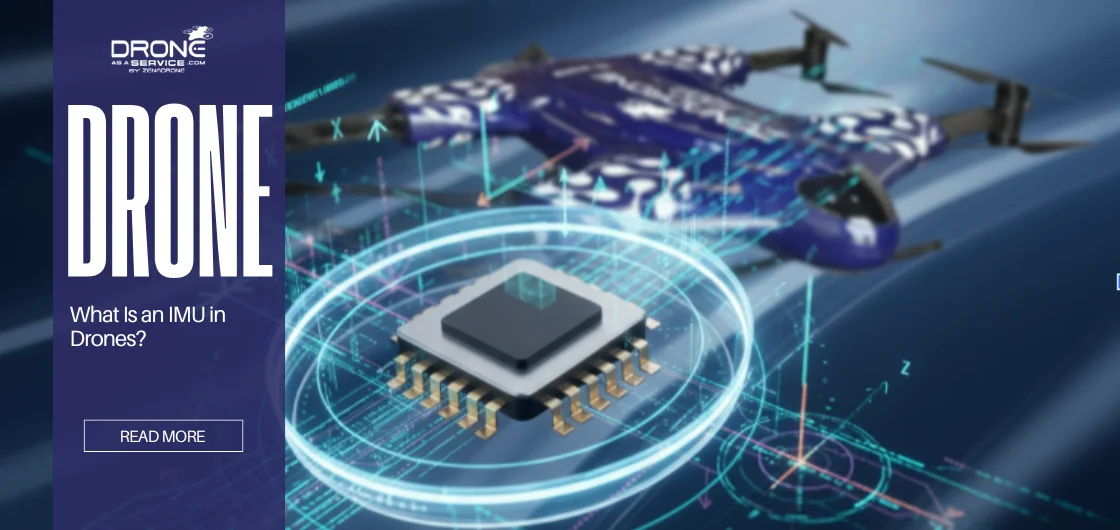
It’s easy to watch a drone fly and think that’s the cool part. But honestly, the true wizardry is hidden inside a tiny chip called the IMU.
Inertial Measurement Unit is like the drone’s quiet, inner sense of balance. It’s always working in the background, keeping things incredibly stable and just knowing where it is, even when GPS completely drops out. I can’t even tell you how many times I’ve seen it save a flight from going wrong.
So if you love flying, capturing those perfect aerial shots, or even building your own drone, getting to know the IMU? It’ll totally change how you feel about control and stability up in the air. It’s a real game-changer.
What exactly is an IMU in a Drone?
An IMU is a compact module filled with motion sensors. Its job is to track acceleration, rotation, and orientation. This highlights the drone IMU function and ensures precise drone IMU accuracy.
It’s always working to track three things: your drone’s acceleration, its rotation, and its orientation. This is how it understands your drone’s every move and tilt.
Inside, it combines data from three key sensors:
- Accelerometers, in order to detect linear motion and tilt
- Gyroscopes, used to measure rotation and angular speed
- Magnetometers, which serve as the drone’s built-in compass
These sensors are like “always talking to each other”. They send a constant stream of data to the flight controller, which then makes immediate adjustments to the motors.
This is what gives you that smooth, stable hover. Honestly, without this chatter from the IMU, the controller would be flying blind. It wouldn’t have a clue how to stay level.
Main Components of IMU
Let’s break down how each component contributes to your drone’s balance and movement.
1. Accelerometer
The accelerometer senses how fast your drone speeds up, slows down, or changes direction. It tracks movement along the X, Y, and Z axes. In simple terms, it’s up, down, forward, and sideways.
You know when you see a drone tilt or start to climb? The accelerometer feels that right away.
It’s basically what keeps your drone from getting wobbly or flipping over when it’s flying. It’s like having a built-in balance coach! Without it, even a little puff of wind could send your drone into a total spin.
2. Gyroscope
The gyroscope is what measures how fast your drone rotates. It’s responsible for keeping the drone stable when it turns or performs a quick maneuver. Thus, every spin, roll, and pitch is tracked to make sure movement stays smooth and precise.
Think of the gyroscope as your drone’s sense of balance in motion. It’s what keeps your drone steady when you make fast directional changes or hover for that perfect photo.
3. Magnetometer
Here’s where direction comes into play. Actually, the magnetometer detects magnetic fields to determine which way is North. Just like a compass!
There are several types used in drones:
- Hall-Effect Magnetometer, a compact and affordable, great for beginner drones.
- Magneto-Induction Magnetometer, known for its stable and accurate readings. A great fit for professional and industrial drones that need consistent performance.
- Magneto-Resistance Magnetometer, known for its incredible speed and precision. A top choice for those who rely on high-end mapping and inspection drones.
Lastly, with a magnetometer, a drone can orient itself properly even when GPS signals are weak or lost.
IMU With vs Without a Magnetometer
Not every IMU includes a magnetometer.
IMUs without a magnetometer can measure motion and rotation but can’t detect direction. They rely solely on GPS for heading information.
If an IMU comes with a magnetometer, it can figure out the true north and track 3D movement. That keeps your drone flying steady and accurate, even in spots where GPS can’t be trusted, such as tunnels or areas surrounded by tall buildings.
Without a magnetometer, a drone can slowly “drift” off course over time. This is known as IMU drift, and it’s one of the key factors that affects drone accuracy.
How an IMU Works Inside a Drone
Here’s the fascinating part. Your drone’s IMU collects hundreds of motion readings every second, things like acceleration, rotation, tilt, and sends them straight to the flight controller.
The controller then compares this data with input from other sensors like the GPS and barometer. If it detects instability, it instantly adjusts the motor speeds to correct it.
That’s why drones can hover so perfectly still, glide smoothly through turns, and maintain balance even when the wind picks up.
Types of IMUs Used in Drones Different drones use different IMUs based on performance needs and budget.
Silicon MEMS IMUs (Micro-Electro-Mechanical Systems)
These are the most common types. They’re small, efficient, and reliable. A favorite in consumer and professional drones. Perfect for aerial photography, mapping, and everyday flight.
Quartz MEMS IMUs
They stay stable even when temperatures shift and don’t drift as much. You’ll usually find them in advanced drones used for inspections and surveying.
FOG (Fiber Optic Gyro) IMUs
These measure rotation using light interference and deliver near-zero drift, which makes them extremely accurate. They’re used in long-range or defense drones where precision is critical.
RLG (Ring Laser Gyro) IMUs
These IMUs are used in aerospace and advanced UAV systems, and they rely on loops of laser light to track rotation. They’re pricey, but their accuracy’s incredible, so they’re perfect for research missions and heavy-duty drones that need pinpoint precision.
Accuracy, Drift, and Calibration in IMUs
Even the fanciest IMUs mess up sometimes. Yeah, it happens. Over time, tiny errors sneak in. That’s what we call IMU drift. It can make your drone feel a little off, like it’s wobbling when it shouldn’t.
Your drone’s sensitive balance can get knocked out of whack by rough landings, vibrations, or even hot and cold days. A quick calibration is a simple fix that straightens everything out, making sure your flights stay buttery-smooth.
Some of the high-end ones are even smarter. They use sensor fusion, mixing data from the IMU, GPS, barometer, and even cameras. Basically, they fix themselves mid-flight. Drift? Barely noticeable. Long flights? No problem. Tricky conditions? Handled.
Role of IMU in Drone Flight Control
The IMU acts like the inner ear of your drone. Meaning, it is always balancing and orienting it in flight.
It stabilizes three main movements: pitch, roll, and yaw. When it senses a tilt, the flight controller instantly compensates by adjusting motor speeds. This constant feedback loop:
- It helps keep your drone perfectly balanced
- It holds its height steady against the wind
- It keeps your camera stable for professional video
- It catches instability the moment it starts
Without the IMU, your drone wouldn’t know which way is up or how to respond to turbulence.
IMU vs AHRS vs INS
You’ve likely come across terms like AHRS or INS while reading about drones, and it can feel a bit confusing. Here’s an easy way to compare them:
| System | What It Does | Key Capabilities |
|---|---|---|
| IMU (Inertial Measurement Unit) | Senses every movement, tilt, and rotation of the drone. | • Detects acceleration & rotation • Measures tilt/shift • Cannot determine true “up” without external reference |
| AHRS (Attitude and Heading Reference System) | Builds on the IMU using software to interpret orientation and heading. | • Calculates attitude & heading • Keeps the drone balanced & responsive • Interprets orientation (not just movement) |
| INS (Inertial Navigation System) | Combines IMU + GPS to determine position, speed, and orientation. | • Tracks position & velocity • Enables navigation & return-to-home • Provides long-distance accuracy using sensor fusion |
The Benefits of an IMU in Drones
So, what makes IMUs such a big deal? Well, quite a lot.
- Stable flight to keep the drone balanced and responsive.
- Smoother footage to reduce vibration for professional-quality videos.
- Improved GPS reliability to help correct motion errors.
- Less pilot stress to automate balance and stability.
- Higher safety, which detects instability before it becomes a problem.
In short, the IMU benefits are what make drones smarter, steadier, and safer to fly.
Limitations of Drone IMUs
As powerful as they are, IMUs still have limits. Here are a few to keep in mind:
- Drift builds up over long flights
- Magnetic interference can cause errors
- Budget IMUs may struggle in high-vibration or high-temperature conditions
- Overheating can impact performance
- Regular calibration is required for accuracy
The good news? With proper maintenance and software updates, these issues are easily manageable.
Applications of IMU in Drone Technology
You’ll find IMUs powering nearly every modern UAV application today:
- Aerial mapping and surveying for precise geographic data
- Infrastructure inspection of bridges, towers, and pipelines
- Precision agriculture to monitor crops and optimize yield
- Cinematic drones for stable, shake-free footage
- Defense and tactical drones for mission-critical reliability
- Autonomous delivery drones that navigate without human control
In every case, the Inertial Measurement Unit drone setup ensures smooth, reliable performance.
The Future of IMU Technology in Drones
IMU technology is evolving fast, and it’s making drones smarter every year. Soon, we’ll see AI-powered IMUs that can learn flight patterns, predict issues, and self-correct in real time.
Micro and nano IMUs will enable drones to be lighter and more energy-efficient. When combined with computer vision and next-generation sensor fusion, drones will achieve centimeter-level accuracy.
The future? Fully autonomous drones that can adapt, navigate, and recover from errors on their own. The IMU will continue to be the foundation that makes it all possible.
Conclusion
The IMU is the heart of every drone because it keeps your drone steady, balanced, and responsive in flight. Without it, even the smartest flight controllers would struggle to maintain control.
Today’s IMUs are incredibly precise and tough. This is what lets your drone pull off those smooth, complex moves, even when the weather decides not to cooperate. And when you team this super-accurate data with AI and GPS, something amazing happens.
Your drone isn’t just flying anymore; it’s thinking. It can see what’s around it and react in real-time, which makes every flight safer, smoother, and just plain smarter.
As IMU technology keeps evolving, drones are becoming smarter, more autonomous, and capable of even more precise missions. For both hobbyists and professionals, the IMU is what makes flights smarter, smoother, and safer.
FAQs
What happens if a drone’s IMU fails during flight?
If the IMU fails, your drone can get confused. Thankfully, most models notice this quickly. They’ll trigger a safety mode to land gently and prevent a crash.
How often should drone IMUs be calibrated?
You should calibrate before every major flight. And you’ll want to recalibrate anytime there’s a big change in temperature, altitude, or location. Doing this keeps your drone flying smoothly and accurately.
What is IMU drift and how can it be reduced?
Your drone’s balance can slowly drift due to tiny sensor errors. Regular calibration solves this. Adding other data makes the flight incredibly stable and precise.
How does a magnetometer improve IMU accuracy?
Yes. It’s your drone’s internal compass. When GPS fails, this little sensor keeps it from getting lost, making sure it always knows which way is home.
What’s the difference between IMU, AHRS, and INS?
An IMU measures motion and rotation. AHRS adds software to calculate orientation and heading. INS goes further by integrating GPS for full navigation and positioning.
Can IMU accuracy affect aerial photography?
Yes. A precise IMU keeps your camera stable for sharp photos and buttery-smooth video, while a poor one can cause blurry shots and shaky, wobbly footage.
Do all drones have IMUs?
Yes. From beginner drones to professional gear, they’re all relying on an IMU. There’s no way they could hold their balance or answer your stick movements properly without one.
How does IMU data support AI-based flight systems?
Yes. By analyzing IMU data, the AI understands the drone’s movement. It then anticipates issues and corrects them instantly. The result is a flight that’s both safer and more intelligent.
Read Our Other Blogs

27 November 2025
The Ultimate Guide to Drone Maintenance and Repair
The Ultimate Guide to Drone Maintenance and Repair Flying a drone is exciting, but proper maintenance ensures smooth, safe, and...
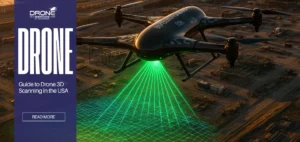
26 November 2025
Guide to Drone 3D Scanning in the USA
Guide to Drone 3D Scanning in the USA Drone-based 3D scanning is changing how teams collect site data. Contractors, developers,...
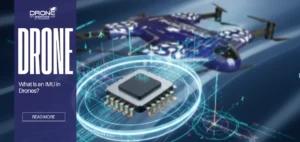
25 November 2025
IMU in Drones: Functions & Benefits
What Is an IMU in Drones? Functions, Benefits, and Accuracy Explained It’s easy to watch a drone fly and think...

24 November 2025
Electronic Speed Controller (ESC) Explained
Electronic Speed Controller (ESC): What It Is, Types, and How It Works Have you ever wondered how drones go faster...
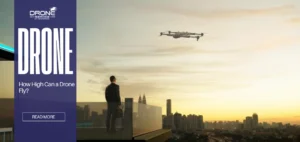
21 November 2025
How High Can a Drone Fly? Legal & Technical Limits
How High Can a Drone Fly? Legal & Technical Limits Drones behave differently at high altitudes and in windy conditions....
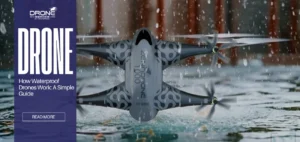
20 November 2025
How Waterproof Drones Work: A Simple Guide
How Waterproof Drones Work: A Simple Guide Waterproof drones are engineered to operate safely around water, unlike standard drones that...


















